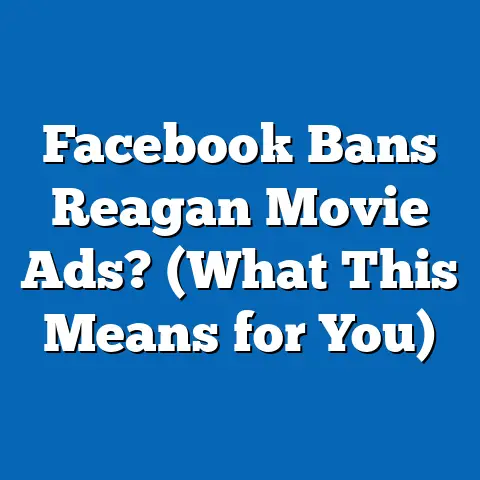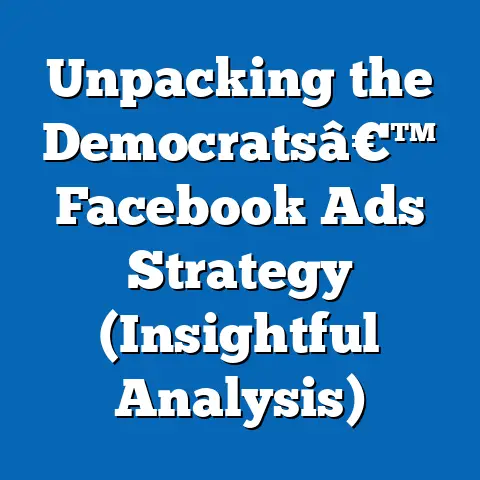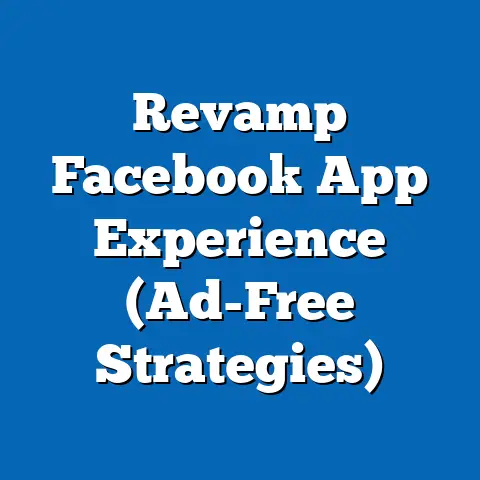Boost Performance with Facebook Ad Checks (Pro Secrets)
Understanding Facebook Ads
Facebook ads are paid advertisements displayed on the Facebook platform, encompassing both the main Facebook feed and associated platforms like Instagram, Messenger, and the Audience Network. Their primary purpose is to reach a specific target audience with relevant messages, driving actions like website visits, lead generation, or sales. Think of them as your digital billboards, strategically placed to capture the attention of potential customers.
The world of Facebook advertising has dramatically evolved since its inception. What started as simple text-based ads has transformed into a sophisticated ecosystem with diverse formats and targeting options. This evolution reflects the changing landscape of digital marketing, where personalization and relevance are paramount. The sheer scale of Facebook’s user base (billions of active users) makes it a powerful platform for businesses of all sizes to connect with their target market.
The beauty of Facebook advertising lies in its versatility. You’re not limited to just one type of ad. Here’s a quick rundown of some popular formats:
- Image Ads: Simple, visually appealing ads featuring a single image and concise copy.
- Video Ads: Engaging ads that capture attention through movement and storytelling.
- Carousel Ads: Ads showcasing multiple images or videos in a swipeable format, ideal for highlighting various products or features.
- Collection Ads: Ads designed for e-commerce, allowing users to browse and purchase products directly from the ad.
- Lead Ads: Ads that collect contact information from users directly within Facebook, simplifying the lead generation process.
- Instant Experience Ads: Full-screen, mobile-optimized ads that provide an immersive browsing experience.
Takeaway: Facebook ads offer a powerful and versatile way to reach your target audience. Understanding the different ad formats is the first step toward creating effective campaigns.
The Importance of Regular Ad Checks
Imagine driving a car without ever checking the fuel gauge, oil levels, or tire pressure. You might get away with it for a while, but eventually, something’s going to break down. The same principle applies to Facebook advertising. Ad checks are the equivalent of a regular maintenance schedule for your campaigns. They involve systematically reviewing your ad performance, identifying areas for improvement, and making necessary adjustments.
Without regular ad checks, you’re essentially flying blind. You might be wasting money on ads that aren’t performing well, missing opportunities to optimize your campaigns, or even unknowingly violating Facebook’s advertising policies. I’ve seen countless businesses struggle because they neglect this crucial step. They launch their ads, cross their fingers, and hope for the best, only to be disappointed by lackluster results.
One of the most common pitfalls I encounter is ad fatigue. This occurs when your target audience becomes oversaturated with your ads, leading to decreased engagement and performance. Think about it: how many times have you seen the same ad pop up in your feed, day after day? Eventually, you tune it out completely. Ad checks help you identify when ad fatigue is setting in and take proactive steps to refresh your creatives, adjust your targeting, or try a different ad format.
Takeaway: Regular ad checks are essential for maximizing your ROI and avoiding costly mistakes. They help you identify areas for improvement, prevent ad fatigue, and ensure your campaigns stay on track.
Key Metrics to Monitor During Ad Checks
Now, let’s dive into the specific metrics you should be monitoring during your ad checks. These KPIs provide valuable insights into the performance of your campaigns and help you identify areas where you can make improvements.
-
Click-Through Rate (CTR): This metric measures the percentage of people who see your ad and click on it. A higher CTR indicates that your ad is resonating with your target audience. It’s calculated by dividing the number of clicks by the number of impressions (the number of times your ad is shown).
- Why it’s important: A low CTR suggests that your ad copy or creative isn’t compelling enough to capture attention.
- How to interpret it: A good CTR varies depending on your industry and target audience, but a general benchmark is around 1-2%. If your CTR is below this, consider testing different ad copy, visuals, or targeting options.
- How it relates to other metrics: CTR directly impacts your Cost Per Click (CPC). A higher CTR can lead to a lower CPC, as Facebook rewards ads that are engaging and relevant.
-
Conversion Rate: This metric measures the percentage of people who click on your ad and then complete a desired action, such as making a purchase, filling out a form, or signing up for a newsletter.
- Why it’s important: Conversion rate is a key indicator of your ad’s effectiveness in driving desired business outcomes.
- How to interpret it: A good conversion rate depends on your industry and the specific action you’re tracking. For e-commerce, a conversion rate of 1-3% is considered average, while a rate of 3-5% is considered good.
- How it relates to other metrics: A high CTR is useless if your conversion rate is low. This indicates that your landing page or offer isn’t compelling enough to convert clicks into desired actions.
-
Cost Per Click (CPC): This metric measures the average cost you pay each time someone clicks on your ad.
- Why it’s important: CPC directly impacts your advertising budget. Lowering your CPC allows you to get more clicks for the same amount of money.
- How to interpret it: CPC varies widely depending on your industry, target audience, and ad placement. It’s important to track your CPC over time and compare it to industry benchmarks.
- How it relates to other metrics: CPC is influenced by your CTR and ad relevance score. Improving these metrics can help lower your CPC.
-
Return on Ad Spend (ROAS): This metric measures the revenue generated for every dollar spent on advertising.
- Why it’s important: ROAS is the ultimate measure of your advertising profitability.
- How to interpret it: A ROAS of 2:1 means you’re generating $2 in revenue for every $1 spent on ads. A higher ROAS is always desirable.
- How it relates to other metrics: ROAS is influenced by all the other metrics, including CTR, conversion rate, and CPC. Optimizing these metrics will ultimately lead to a higher ROAS.
-
Engagement Rate: This metric measures the level of interaction your ads receive, including likes, comments, shares, and saves.
- Why it’s important: Engagement rate indicates how well your ads are resonating with your target audience.
- How to interpret it: A good engagement rate varies depending on your industry and ad format. Video ads typically have higher engagement rates than image ads.
- How it relates to other metrics: Higher engagement rates can lead to increased brand awareness and organic reach.
Click-Through Rate (CTR): This metric measures the percentage of people who see your ad and click on it. A higher CTR indicates that your ad is resonating with your target audience. It’s calculated by dividing the number of clicks by the number of impressions (the number of times your ad is shown).
- Why it’s important: A low CTR suggests that your ad copy or creative isn’t compelling enough to capture attention.
- How to interpret it: A good CTR varies depending on your industry and target audience, but a general benchmark is around 1-2%. If your CTR is below this, consider testing different ad copy, visuals, or targeting options.
- How it relates to other metrics: CTR directly impacts your Cost Per Click (CPC). A higher CTR can lead to a lower CPC, as Facebook rewards ads that are engaging and relevant.
Conversion Rate: This metric measures the percentage of people who click on your ad and then complete a desired action, such as making a purchase, filling out a form, or signing up for a newsletter.
- Why it’s important: Conversion rate is a key indicator of your ad’s effectiveness in driving desired business outcomes.
- How to interpret it: A good conversion rate depends on your industry and the specific action you’re tracking. For e-commerce, a conversion rate of 1-3% is considered average, while a rate of 3-5% is considered good.
- How it relates to other metrics: A high CTR is useless if your conversion rate is low. This indicates that your landing page or offer isn’t compelling enough to convert clicks into desired actions.
Cost Per Click (CPC): This metric measures the average cost you pay each time someone clicks on your ad.
- Why it’s important: CPC directly impacts your advertising budget. Lowering your CPC allows you to get more clicks for the same amount of money.
- How to interpret it: CPC varies widely depending on your industry, target audience, and ad placement. It’s important to track your CPC over time and compare it to industry benchmarks.
- How it relates to other metrics: CPC is influenced by your CTR and ad relevance score. Improving these metrics can help lower your CPC.
Return on Ad Spend (ROAS): This metric measures the revenue generated for every dollar spent on advertising.
- Why it’s important: ROAS is the ultimate measure of your advertising profitability.
- How to interpret it: A ROAS of 2:1 means you’re generating $2 in revenue for every $1 spent on ads. A higher ROAS is always desirable.
- How it relates to other metrics: ROAS is influenced by all the other metrics, including CTR, conversion rate, and CPC. Optimizing these metrics will ultimately lead to a higher ROAS.
Engagement Rate: This metric measures the level of interaction your ads receive, including likes, comments, shares, and saves.
- Why it’s important: Engagement rate indicates how well your ads are resonating with your target audience.
- How to interpret it: A good engagement rate varies depending on your industry and ad format. Video ads typically have higher engagement rates than image ads.
- How it relates to other metrics: Higher engagement rates can lead to increased brand awareness and organic reach.
Takeaway: Monitoring these key metrics during your ad checks is crucial for understanding the performance of your campaigns and identifying areas for improvement. Understanding how these metrics relate to each other will allow for more informed decision-making.
Tools and Techniques for Effective Ad Checks
Fortunately, you don’t have to rely on guesswork to conduct your ad checks. Facebook provides a wealth of tools and resources to help you track and analyze your ad performance.
-
Facebook Ads Manager: This is your central hub for creating, managing, and analyzing your Facebook ad campaigns. It provides detailed data on all the key metrics we discussed earlier, allowing you to track your performance over time and identify trends. I spend a significant amount of time in Ads Manager, slicing and dicing data to uncover hidden insights.
-
Google Analytics: While Facebook Ads Manager provides insights into your ad performance on the platform, Google Analytics allows you to track what happens after people click on your ads and land on your website. This is crucial for understanding your conversion rate and ROAS.
-
Third-Party Analytics Tools: There are also a number of third-party analytics tools that can provide even more in-depth insights into your Facebook ad performance. These tools often offer advanced features like competitor analysis, automated reporting, and predictive analytics.
Facebook Ads Manager: This is your central hub for creating, managing, and analyzing your Facebook ad campaigns. It provides detailed data on all the key metrics we discussed earlier, allowing you to track your performance over time and identify trends. I spend a significant amount of time in Ads Manager, slicing and dicing data to uncover hidden insights.
Google Analytics: While Facebook Ads Manager provides insights into your ad performance on the platform, Google Analytics allows you to track what happens after people click on your ads and land on your website. This is crucial for understanding your conversion rate and ROAS.
Third-Party Analytics Tools: There are also a number of third-party analytics tools that can provide even more in-depth insights into your Facebook ad performance. These tools often offer advanced features like competitor analysis, automated reporting, and predictive analytics.
Now, let’s walk through the steps of conducting a thorough ad check:
- Set up regular check-in schedules: I recommend checking your ad performance at least once a week, if not more frequently. This allows you to identify and address any issues quickly before they negatively impact your campaigns.
- Use A/B testing: A/B testing involves creating multiple versions of your ads and testing them against each other to see which performs best. This is a powerful way to optimize your ad copy, visuals, and targeting options. Facebook offers built-in A/B testing features, making it easy to run these experiments.
- Monitor audience engagement and feedback: Pay attention to the comments and reactions your ads receive. This provides valuable insights into how your target audience is responding to your messaging. You can also use Facebook’s audience insights tool to learn more about the demographics, interests, and behaviors of your target audience.
Takeaway: Utilizing the right tools and following a systematic process will make your ad checks more efficient and effective. Don’t be afraid to experiment with different strategies and techniques to find what works best for your business.
Pro Secrets for Optimizing Facebook Ads Post-Check
Once you’ve conducted your ad checks and identified areas for improvement, it’s time to take action. Here are some pro secrets for optimizing your Facebook ads and boosting your performance:
-
Audience Segmentation and Retargeting: Don’t treat all your customers the same. Segment your audience based on demographics, interests, behaviors, and past interactions with your business. Then, create targeted ads that speak directly to each segment. Retargeting allows you to reach people who have previously interacted with your website or Facebook page, increasing the likelihood of conversion. I’ve seen incredible results with retargeting campaigns, often achieving ROAS 5x or higher.
-
Refresh Ad Creatives: As I mentioned earlier, ad fatigue is a real issue. To combat this, regularly refresh your ad creatives with new images, videos, and ad copy. Experiment with different angles and messaging to see what resonates best with your target audience.
-
Budget Allocation and Bidding Strategies: Don’t spread your budget too thin across too many campaigns. Focus your spending on the ads that are performing best and consider increasing your bids to improve your ad reach. Facebook offers a variety of bidding strategies, including automatic bidding, cost per result bidding, and value bidding. Experiment with different strategies to see which delivers the best results for your business.
Audience Segmentation and Retargeting: Don’t treat all your customers the same. Segment your audience based on demographics, interests, behaviors, and past interactions with your business. Then, create targeted ads that speak directly to each segment. Retargeting allows you to reach people who have previously interacted with your website or Facebook page, increasing the likelihood of conversion. I’ve seen incredible results with retargeting campaigns, often achieving ROAS 5x or higher.
Refresh Ad Creatives: As I mentioned earlier, ad fatigue is a real issue. To combat this, regularly refresh your ad creatives with new images, videos, and ad copy. Experiment with different angles and messaging to see what resonates best with your target audience.
Budget Allocation and Bidding Strategies: Don’t spread your budget too thin across too many campaigns. Focus your spending on the ads that are performing best and consider increasing your bids to improve your ad reach. Facebook offers a variety of bidding strategies, including automatic bidding, cost per result bidding, and value bidding. Experiment with different strategies to see which delivers the best results for your business.
Takeaway: Optimizing your Facebook ads is an ongoing process. By continuously monitoring your performance and making adjustments based on your findings, you can significantly improve your ROI and achieve your business goals.
Case Studies and Real-Life Examples
Let’s take a look at a few real-life examples of businesses that have successfully boosted their ad performance through diligent ad checks:
-
E-commerce Brand: An online clothing retailer noticed that their conversion rate was declining. After conducting an ad check, they discovered that their ads were primarily targeting a broad audience with generic messaging. They segmented their audience based on demographics and purchase history and created targeted ads that showcased specific products relevant to each segment. As a result, their conversion rate increased by 50% and their ROAS doubled.
-
Local Restaurant: A local restaurant was struggling to attract new customers through their Facebook ads. After conducting an ad check, they realized that their ads were only running during the day, when most people were at work. They adjusted their ad schedule to run primarily during the evening and on weekends, when people were more likely to be looking for dining options. This simple change led to a significant increase in website traffic and reservations.
-
Software Company: A software company was running lead generation ads but was seeing a high cost per lead. After conducting an ad check, they discovered that their landing page was not optimized for mobile devices. They optimized their landing page for mobile and saw a dramatic decrease in their cost per lead.
E-commerce Brand: An online clothing retailer noticed that their conversion rate was declining. After conducting an ad check, they discovered that their ads were primarily targeting a broad audience with generic messaging. They segmented their audience based on demographics and purchase history and created targeted ads that showcased specific products relevant to each segment. As a result, their conversion rate increased by 50% and their ROAS doubled.
Local Restaurant: A local restaurant was struggling to attract new customers through their Facebook ads. After conducting an ad check, they realized that their ads were only running during the day, when most people were at work. They adjusted their ad schedule to run primarily during the evening and on weekends, when people were more likely to be looking for dining options. This simple change led to a significant increase in website traffic and reservations.
Software Company: A software company was running lead generation ads but was seeing a high cost per lead. After conducting an ad check, they discovered that their landing page was not optimized for mobile devices. They optimized their landing page for mobile and saw a dramatic decrease in their cost per lead.
These case studies highlight the importance of paying attention to the data and making informed decisions based on your findings. The key is to be proactive, adaptable, and always willing to experiment.
Takeaway: Real-world examples demonstrate the tangible benefits of consistent ad checks and optimization. Learn from these successes and apply the lessons to your own campaigns.
Conclusion
In conclusion, mastering Facebook advertising is not a one-time effort but an ongoing process of learning, testing, and optimization. Regular ad checks are the cornerstone of this process, providing you with the insights you need to make informed decisions and maximize your ROI. Remember, the key to success lies in consistently monitoring your performance, identifying areas for improvement, and taking proactive steps to optimize your campaigns. By implementing the pro secrets I’ve shared in this guide, you can unlock the full potential of Facebook advertising and achieve your business goals. So, start conducting your ad checks today and watch your performance soar!





